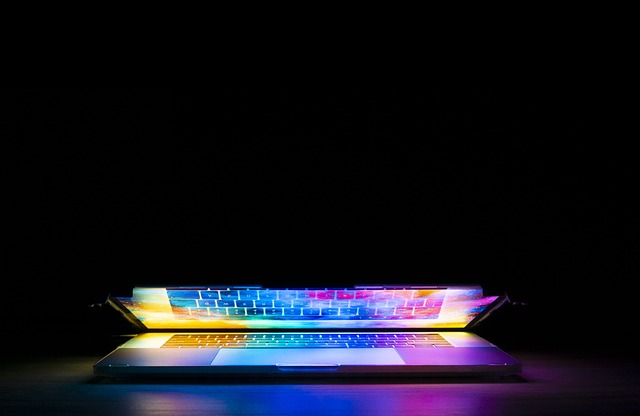In the rhythm of daily life, the digital world has become an ever‑present companion. Smartphones buzz, notifications ping, and scrolling seems to be the default mode of interaction. Yet, amid this constant connectivity, a growing awareness emerges: the need to step back, to pause, to experience life without the digital echo. This practice, often called Internet isolation, is more than a trend; it is a deliberate effort to reclaim the spaces where human connection thrives naturally.
The Invisible Thread of Constant Connectivity
Most people start their day with a glance at the phone, checking emails, or scrolling through social feeds. The subtle pull of these digital signals forms an invisible thread that we weave through every interaction. While this thread offers convenience, it can also create a sense of distraction, fragmentation, and even anxiety. The question is not whether technology is good or bad, but whether we use it mindfully or let it dictate our attention.
What is Internet Isolation?
Internet isolation refers to the intentional, temporary or sustained disconnection from online platforms. It can range from a single hour of phone‑free time to a week‑long digital retreat. The goal is to reduce digital noise, sharpen focus on immediate surroundings, and strengthen in‑person relationships.
- Reduces exposure to curated content that can distort self‑image.
- Encourages engagement with the physical environment.
- Creates space for spontaneous conversations.
Mindful Moments: How to Begin Internet Isolation
Starting with small, manageable steps can make the shift less intimidating. Here are three practical approaches:
- Set a Boundaries Schedule: Designate certain hours—such as the first hour after waking or the last hour before bed—where devices remain off. During these periods, focus on tasks that require undistracted attention.
- Use “Do Not Disturb” Wisely: Turn off non‑essential notifications. The quiet can help you notice sounds and conversations you usually miss.
- Create a Physical Space: Keep a device in another room or a bag. Having a visible boundary reminds you of the pause you intend.
The Psychological Impact of Digital Detours
Research consistently shows that excessive screen time can affect mental health. Studies on attention span, sleep quality, and even the ability to empathize find a correlation with the volume of digital engagement. In contrast, deliberate Internet isolation offers a counterbalance:
- Improved concentration and memory retention.
- Better sleep patterns due to reduced blue‑light exposure.
- Enhanced empathy and listening skills during face‑to‑face conversations.
Case Study: The 48‑Hour Retreat
In a recent community experiment, participants signed up for a 48‑hour retreat in a rural setting. They left all devices at the entrance, carried only a notebook and a pen, and engaged in group discussions, nature walks, and shared meals. After the retreat, participants reported:
“I felt more present. My thoughts were clearer, and the people around me felt genuinely heard.”
This anecdote illustrates how removal of digital stimuli can rejuvenate social bonds and internal clarity.
Balancing Technology and Human Connection
The objective of Internet isolation is not to abandon technology entirely but to harmonize its use with human interaction. Below are guidelines for finding that equilibrium:
- Schedule “Tech Time”: Allocate specific periods for checking messages or browsing news, but keep them short—15 to 30 minutes.
- Prioritize Real‑World Relationships: Plan weekly dinners or walks with friends, ensuring that conversations are not mediated by screens.
- Set Tech‑Free Zones: The dining table, bedroom, and living area can become sanctuaries free from device interference.
Tools that Aid Digital Detox
While the focus is on unplugging, certain tools can support the process:
- App‑based timers that lock distracting sites for chosen intervals.
- Calendar reminders that flag designated phone‑free periods.
- Portable whiteboards where thoughts and tasks can be written down instead of typed.
Personal Stories: Voices from the Quiet
Individuals who embrace Internet isolation share transformative experiences. Maria, a 32‑year‑old graphic designer, recounts how a month without constant connectivity allowed her to rediscover her love for sketching:
“My sketchbook filled up with ideas that I would never have entertained on the endless scroll. I feel like I’m finally seeing the world, not through a screen.”
Similarly, Daniel, a high school teacher, noticed a shift in his classroom dynamics after reducing his own digital distractions. Students began asking more questions, and the dialogue flowed more naturally.
Practical Challenges and How to Overcome Them
Stepping away from the Internet is not without hurdles. Common obstacles include:
- Fear of Missing Out (FOMO): The sense that something critical could happen online. Counter this by setting clear boundaries and reminding yourself of your goals.
- Work‑Related Urgency: Some roles require real‑time communication. Consider establishing “no‑interruption” windows during high‑focus tasks.
- Social Pressure: Friends or family may question your absence from online platforms. Share your intent and invite them to join you in a digital pause.
Strategies for the Workplace
Organizations that champion digital wellness can foster a healthier work culture. Initiatives may include:
- “Digital Sabbaticals” where employees can take extended periods of reduced connectivity.
- Workspaces designed with noise‑reduction and breakout areas that encourage collaboration without screens.
- Regular “Tech Break” reminders embedded in the daily calendar.
Long‑Term Benefits of Internet Isolation
When integrated into daily habits, Internet isolation yields sustained improvements across several domains:
- Enhanced emotional intelligence as people learn to read subtle cues in face‑to‑face interactions.
- Greater resilience to information overload, allowing for more decisive thinking.
- Improved well‑being through the cultivation of mindful practices such as journaling, meditation, or physical exercise.
Future Outlook: A Balanced Digital Society
The trajectory of technology is undeniable, but so is the human need for connection. As society evolves, a balanced approach will emerge—one that leverages digital tools while preserving the richness of in‑person experience. By embracing periods of Internet isolation, individuals contribute to a culture that values depth over breadth, presence over perfection.
In conclusion, stepping back from the digital glow does not signify a rejection of technology; rather, it is an affirmation that human connection, empathy, and presence hold the most enduring power. Whether you choose a brief nightly pause or a longer retreat, each moment unplugged offers an opportunity to realign your focus, re‑engage with those around you, and rediscover the simple, unfiltered rhythms of life.




